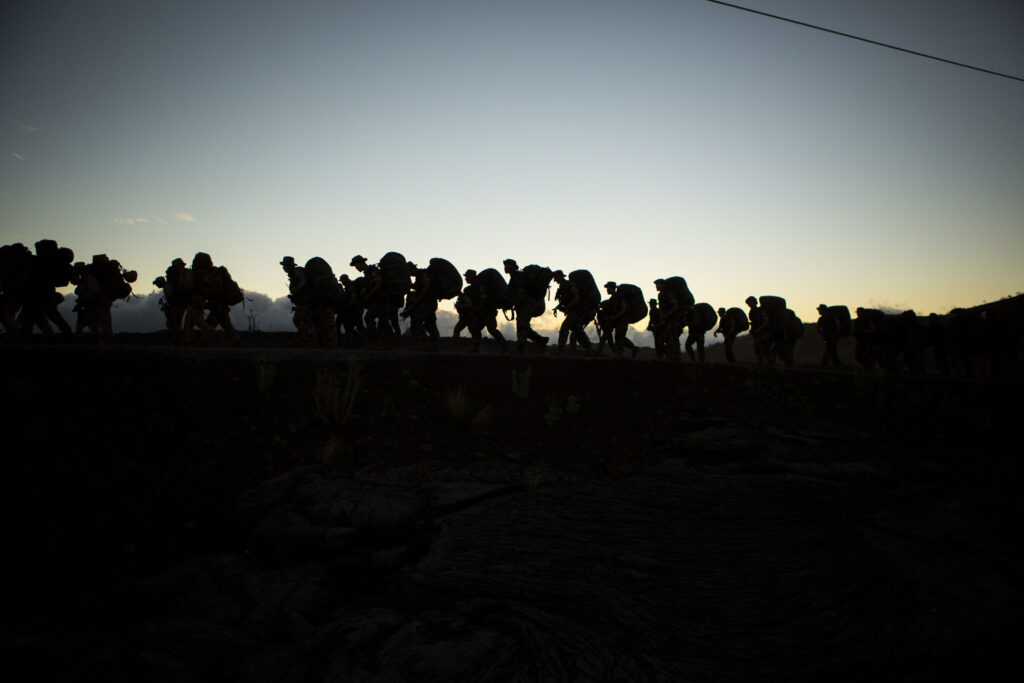
WASHINGTON – A key part of the Marine Corps’ ongoing Force Design 2030 is creation of a “stand-in force,” which is intended to be relatively small, highly mobile but lethal units that are to operate well within the enemy’s “weapons engagement zone,” primarily in the Western Pacific. Although this would appear to be a radical, new and potentially dangerous task, a panel of senior Marine officers intensely engaged in the process argued May 11 that the Marines are inherently prepared for this mission and, they emphasized repeatedly, those Marine units would be fighting as part of the U.S. joint force and closely aligned with allies and partners in the Pacific theater.
Force Design 2030 and the concept of the stand-in force is a recognition of the rapidly changing character of war, driven by the fielding of high-tech sensors and precision weapon and the growing involvement of cyberwarfare, said Brig. Gen. Joseph Clearfield, deputy commander of Marine Forces Pacific. “I am so proud that the Marine Corps is out in front on this change,” Clearfield told an audience at the Modern Day Marine exposition at the Walter E. Washington Convention Center.
But Clearfield and his fellow panelists said the Marines traditionally train for the skills needed for the stand-in mission. “We are incredibly well positioned to assume this mission,” Clearfield said.
Col. Timothy Brady, commanding officer of the still-forming 3rd Marine Littoral Regiment, which is to be the first of the units specifically prepared for the stand-in mission, said his regiment “is a small element of MarForPac, part of what will fight inside the enemy’s weapons engagement zone” to set the stage for the joint force.
And Col. Stephen Fiscus, assistant chief of staff for Force Development in MarForPac, who said he is tasked with implementing Force Design, added that “we fight as part of the joint force” and are “already working with our allies and partners.” Clearfield noted that Australia and Japan, America’s closest Pacific allies, are starting to develop similar units.
Brady said his regiment, which was redesignated as the 3rd MLR last year, has its infantry battalion and is to add logistics and air defense battalions as it moves to full operational status in two years. But, he noted, the initial units already have conducted a large-scale exercise with Philippine forces and will engage in even larger tests during the massive Rim of the Pacific Exercise later this year.
While stressing the Marines’ inherent capabilities for the stand-in mission, the three officers acknowledged they need additional capabilities for “persistent stare” sensing and targeting and greater mobility, particularly at sea. Clearfield specifically cited the proposed light amphibious warships, which the Navy’s shipbuilding plan had delayed for at least another year.
Clearfield warned that although the Marines’ force design process is aimed at producing a new organization by 2030, “we may not have that much time,” because of the rapid change in the character of war.






